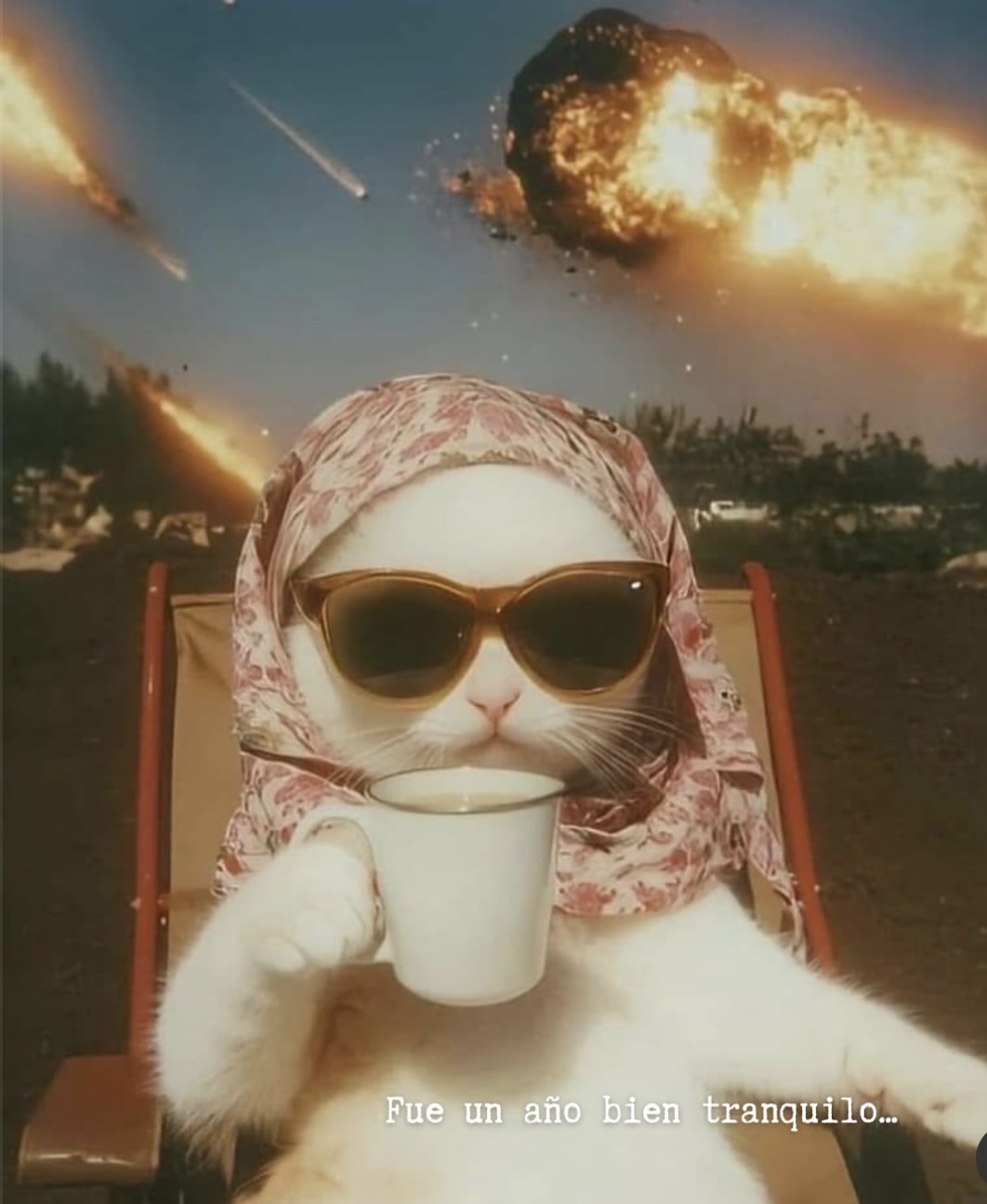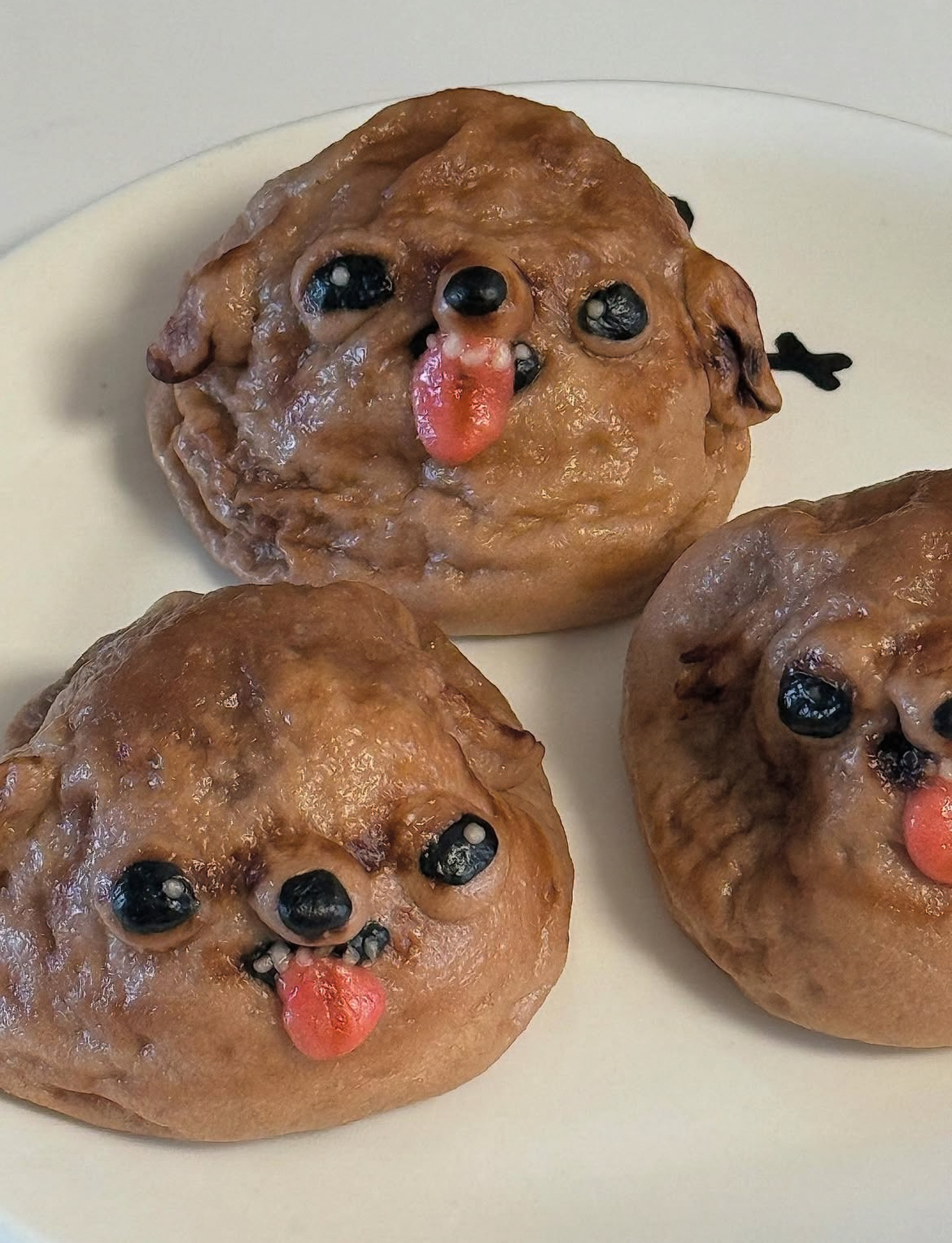'La imagen inquietante': La imagen y la disrupción del proceso creativo
«La imagen inquietante» es una serie de reflexiones en torno a un nuevo tipo de imagen, en la que lo «real» pierde sentido ante una tecnología que desafía nuestra comprensión de la creatividad.

En una economía de libre mercado cada vez más fragmentada, cualquier usuario de Internet tiene el potencial de convertirse en creador de contenido, aprovechando las herramientas a su disposición para crear y extraer valor en diferentes formas y variantes. La generación de memes, imágenes, videos y carretes es un elemento clave de la máquina generadora de «ingresos pasivos» que llamamos «economía de los creadores», ahora exacerbada por la IA. Desde finales de 2023, las herramientas de IA permiten a los «usuarios» o «creadores de contenido» generar imágenes más rápido que cualquier artista vivo con un nivel de calidad muy alto. La cuestión aquí es: ¿qué es la calidad en este contexto? Dejando de lado el hecho de que el uso de herramientas de IA es objetivamente irresponsable en términos de su uso indiscriminado de energía, agua y mano de obra no remunerada, el uso de nuevas tecnologías como parte del proceso creativo no es necesariamente perjudicial para el desarrollo de las artes. Lo que es perjudicial es la delegación total del proceso creativo, que es esencialmente una forma de pensar humana. Cuando vas a una escuela de diseño o de arte, aprendes muy pronto que producir resultados de calidad no es tan importante como desarrollar y seguir un proceso que te lleve a un resultado coherente e intencionado. No solo es necesario un proceso para obtener resultados de calidad en el arte y el diseño, sino también un esfuerzo consciente por desviarse de la idea inicial.
Lo que resulta perjudicial es delegar por completo el proceso creativo, que es esencialmente una forma de pensar humana. Cuando vas a una escuela de diseño o arte, pronto aprendes que producir resultados de calidad no es tan importante como desarrollar y seguir un proceso que te lleve a un resultado coherente e intencionado. No solo es necesario un proceso para obtener resultados de calidad en el arte y el diseño, sino también un esfuerzo consciente por desviarse de la idea inicial. Tuve un maestro que solía decir que podemos pensar en las ideas como copos de nieve: tendrás millones de ideas, pero si no las desarrollas y elaboras un plan para llevarlas a cabo, se derretirán tan pronto como toquen el suelo y volverán a ser nada. Lo complicado de cualquier tipo de ejercicio creativo es que necesitamos atrapar esos copos de nieve fijándolos. Lo que las herramientas de IA permiten hacer ahora es saltarse por completo el proceso que permite convertir las ideas en realidad de forma consciente y coherente. Una idea, en sí misma, nunca tiene un valor inherente, necesita desarrollarse y evolucionar a través de múltiples iteraciones hasta llegar a un punto en el que pueda considerarse definitiva. Una idea verdadera y real nunca es la primera idea. Cuando miramos imágenes generadas por IA, lo que realmente estamos viendo es un prototipo perfecto de la primera idea. Entonces, ¿qué sucede cuando el público ya no puede distinguir entre prototipos perfectos e ideas elaboradas?
Por un lado, los artistas y creadores se ven aún más desanimados a la hora de seguir adelante con sus procesos creativos. Los miembros de la industria creativa ya se enfrentan a suficientes retos para dedicarse a su oficio; además de las precarias condiciones laborales, los bajos salarios y la vulnerabilidad ante las tendencias cambiantes del mercado, ahora tienen que competir con una máquina que puede crear imágenes en segundos. ¿Cómo pueden competir? ¿Cómo podemos garantizar que los creadores reciban una compensación justa por el valor que les exigimos? En segundo lugar, al inundar al público con imágenes falsas que parecen completas, pero que no están del todo terminadas, el diálogo que existe entre la iconografía, la cultura pop y las redes sociales se ve aún más contaminado por la idea de que lo real es irrelevante. En este sentido, lo surrealista se convierte en un refugio seguro. El individuo se ve empujado aún más a una cámara de eco de sí mismo, donde sus convicciones se radicalizan de una manera que nunca puede materializarse ni alcanzarse realmente.

En el campo de la robótica y, más recientemente, en la animación por computadora, el término «valle inquietante» fue acuñado por primera vez en la década de 1970 por el profesor japonés de robótica Masahiro Mori, quien describió la sensación de inquietud que experimentan las personas al interactuar con un robot que se parece mucho a un humano, pero no del todo. Este concepto comenzó a cobrar importancia con las mejoras exponenciales realizadas en el campo de la robótica y el uso generalizado de robots físicos en tiendas, espacios públicos e incluso hogares en algunos países. Las prótesis, los robots anfitriones en exposiciones y los asistentes robóticos humanoides son algunos ejemplos de productos de consumo que calcularon con precisión el grado de apariencia humana que podían tener sus robots sin producir un efecto «inquietante» en los consumidores. Las herramientas de IA son máquinas, una especie de robots, por decirlo sin rodeos, aunque no estén incorporadas en algún tipo de hardware. ¿Podría aplicarse el concepto de «valle inquietante» a las interacciones que tienen lugar entre el arte generado por IA y la experiencia humana? ¿Cómo cambia la estética en torno a la interacción con las imágenes en la cultura pop y cómo estas nuevas interacciones dan forma al trabajo de los artistas? Una respuesta al tipo perfectamente genérico de imágenes generadas por IA es la rutina imperfecta, la vulgaridad y lo surrealista.
El público busca autenticidad donde parece no haberla, como si alcanzar la belleza ideal a través de las imágenes se hubiera banalizado hasta el punto de considerarse irrelevante o mundano. Algo similar podría ocurrirle al artista, que podría intentar llevar la figuración más allá de la realidad, el hiperrealismo e incluso la abstracción. Podemos observar esta tendencia en las obras de arte que prefieren imágenes borrosas, proporciones exageradas y un retorno a lo surrealista. Cuando un artista concibe una obra de arte, no espera necesariamente complacer al espectador con el resultado. Crea desde dentro, con el deseo de manifestar sus experiencias y emociones al mundo, un deseo que, a menos que se escriba correctamente en una consigna, es inexistente dentro de una máquina. Las economías, los mercados y la presión constante para capitalizar cualquier tipo de valor nos empujan a saltarnos el proceso, a llegar a conclusiones rápidas y baratas. ¿Qué sentido tiene ahogarnos en imágenes perfectas que no disfrutamos viendo? ¿Por qué producimos arte en primer lugar? ¿Quién se beneficia realmente de generar tal cantidad de imágenes a tal velocidad? Las nuevas tecnologías han surgido y han cambiado nuestra forma de crear desde que existe el arte, pero no se trata de demonizar una herramienta solo porque sea nueva, sino de preguntarnos si las nuevas tecnologías amplían nuestra creatividad o la obstaculizan.
Lo más importante es que debemos plantearnos si el futuro que encarnamos como profesionales creativos al elegir determinados tipos de artefactos y procesos es un futuro justo, pero sobre todo, agradable.

